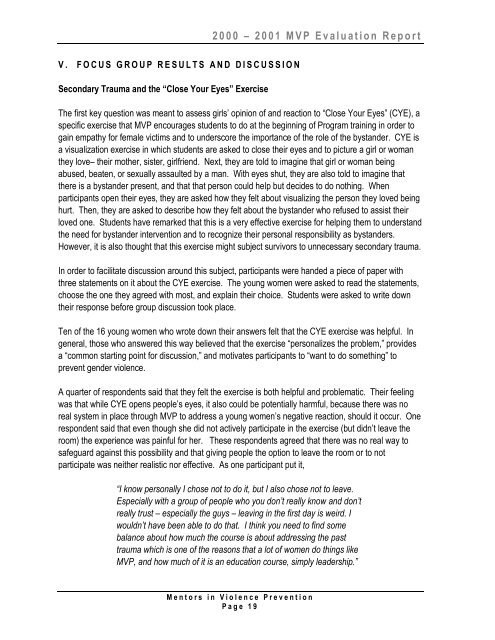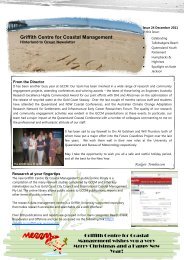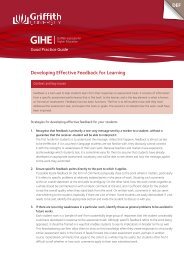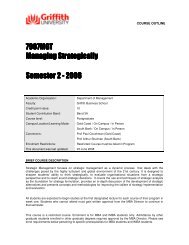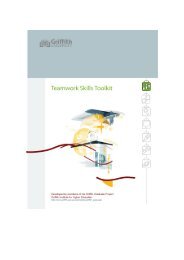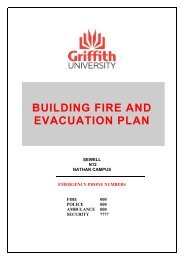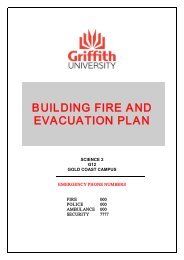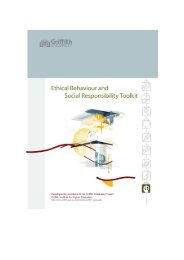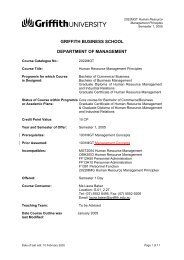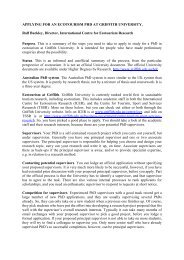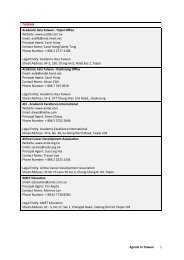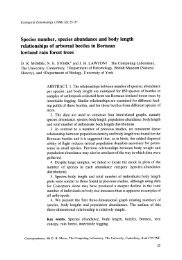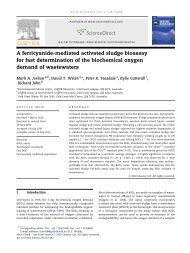MVP Evaluation Report Year 2 - Griffith University
MVP Evaluation Report Year 2 - Griffith University
MVP Evaluation Report Year 2 - Griffith University
Create successful ePaper yourself
Turn your PDF publications into a flip-book with our unique Google optimized e-Paper software.
2000 – 2 0 0 1 M V P E v a l u a t i o n R e p o r t<br />
V .<br />
F O C U S G R O U P R E S U L T S A N D D I S C U S S I O N<br />
Secondary Trauma and the “Close Your Eyes” Exercise<br />
The first key question was meant to assess girls‟ opinion of and reaction to “Close Your Eyes” (CYE), a<br />
specific exercise that <strong>MVP</strong> encourages students to do at the beginning of Program training in order to<br />
gain empathy for female victims and to underscore the importance of the role of the bystander. CYE is<br />
a visualization exercise in which students are asked to close their eyes and to picture a girl or woman<br />
they love– their mother, sister, girlfriend. Next, they are told to imagine that girl or woman being<br />
abused, beaten, or sexually assaulted by a man. With eyes shut, they are also told to imagine that<br />
there is a bystander present, and that that person could help but decides to do nothing. When<br />
participants open their eyes, they are asked how they felt about visualizing the person they loved being<br />
hurt. Then, they are asked to describe how they felt about the bystander who refused to assist their<br />
loved one. Students have remarked that this is a very effective exercise for helping them to understand<br />
the need for bystander intervention and to recognize their personal responsibility as bystanders.<br />
However, it is also thought that this exercise might subject survivors to unnecessary secondary trauma.<br />
In order to facilitate discussion around this subject, participants were handed a piece of paper with<br />
three statements on it about the CYE exercise. The young women were asked to read the statements,<br />
choose the one they agreed with most, and explain their choice. Students were asked to write down<br />
their response before group discussion took place.<br />
Ten of the 16 young women who wrote down their answers felt that the CYE exercise was helpful. In<br />
general, those who answered this way believed that the exercise “personalizes the problem,” provides<br />
a “common starting point for discussion,” and motivates participants to “want to do something” to<br />
prevent gender violence.<br />
A quarter of respondents said that they felt the exercise is both helpful and problematic. Their feeling<br />
was that while CYE opens people‟s eyes, it also could be potentially harmful, because there was no<br />
real system in place through <strong>MVP</strong> to address a young women‟s negative reaction, should it occur. One<br />
respondent said that even though she did not actively participate in the exercise (but didn‟t leave the<br />
room) the experience was painful for her. These respondents agreed that there was no real way to<br />
safeguard against this possibility and that giving people the option to leave the room or to not<br />
participate was neither realistic nor effective. As one participant put it,<br />
“I know personally I chose not to do it, but I also chose not to leave.<br />
Especially with a group of people who you don‟t really know and don‟t<br />
really trust – especially the guys – leaving in the first day is weird. I<br />
wouldn‟t have been able to do that. I think you need to find some<br />
balance about how much the course is about addressing the past<br />
trauma which is one of the reasons that a lot of women do things like<br />
<strong>MVP</strong>, and how much of it is an education course, simply leadership.”<br />
M e n t o r s i n V i o l e n c e P r e v e n t i o n<br />
P a g e 19


